Of all three countries we have chosen to include in our guide, Ukraine is by far the most unique example. Although not a member of the EU (thus lacking the EU funding both Poland and Romania have received for the development of businesses in the IT industry), Ukraine has been frequently rated as a top IT outsourcing provider in Central Eastern Europe.
For a country that still lags behind its Central Eastern European peers in terms of EU integration, Ukraine is, in many ways, a miracle - one that has been fueled by great talent, a government that understands the importance of the IT sector, and the right global IT landscape, currently quite unstable.
This chapter will give you a better understanding of what Ukraine’s IT outsourcing landscape looks like, what are the reasons behind it, and what is likely to happen in the near to medium future given the economic and political context of Ukraine.
Same as in the other examples, we will try to look at some of the most in-demand IT outsourcing businesses in Ukraine, their locations, their inbound marketing strategies, the talent they are fighting for and the challenges and opportunities of the entire market in this country.

No problem! Just enter your email address and we'll send you the PDF of this guide for free.
As one of the biggest players in the global and Eastern European IT outsourcing market, Ukraine has plenty to offer. In fact, many of its major IT outsourcing companies find
In fact, even Gartner rated Ukraine as one of the top locations to outsource your IT - and multiple other studies show the same thing. Even based on Clutch’s list of top Eastern European IT outsourcing countries (shown here), Ukraine is a leader on the market.
Of all the IT outsourcing companies in Ukraine (employing no less than 230,000 IT professionals according to a report released by N-iX), the following are rated as the top 10 (according to Clutch):
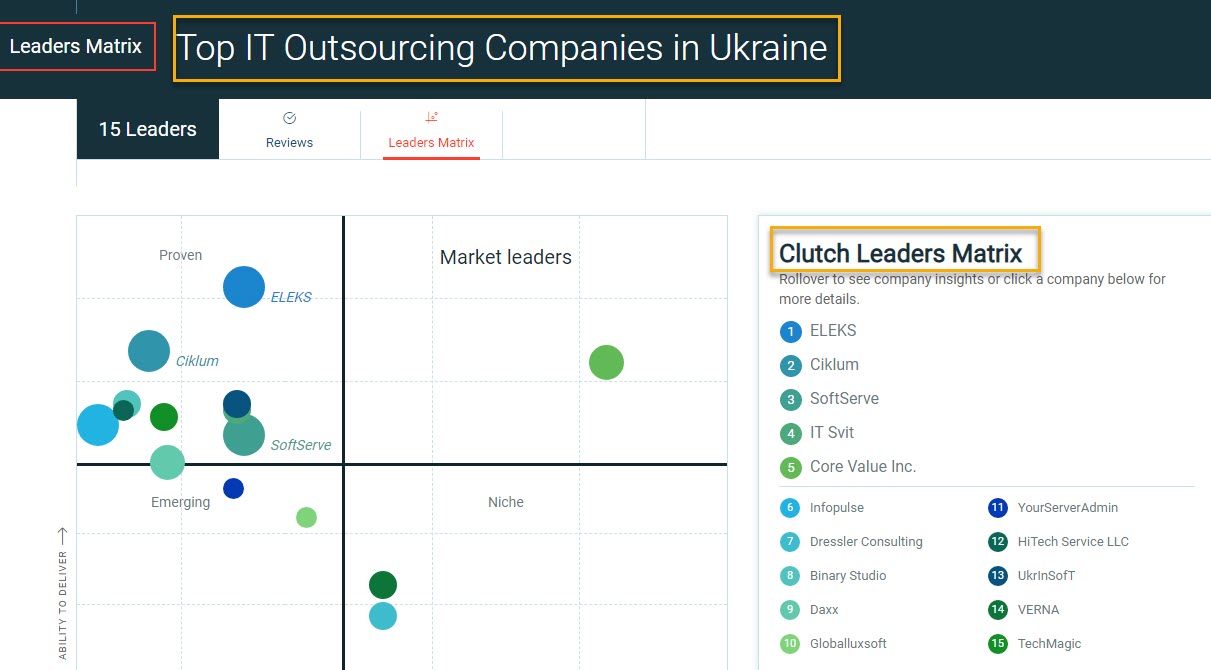
Moreover, it is definitely worth mentioning that, according to N-iX’s report, 12 Ukrainian companies have been included in the 2017 Global Outsourcing 100 list by the International Association of Outsourcing Professionals as being among the best IT outsourcing providers.
A lot of these companies are based in Kyiv (like Ciklum and SoftServe), but others are based in larger cities like Lviv (like Dressler Consulting and Binary Studio) and Kharkiv (like Globalluxsoft and IT Svit).
Although the power of the IT outsourcing companies is pretty well distributed among the three aforementioned cities, the number of locations playing on this market in Ukraine seems smaller than in Poland (where multiple cities have clustered top IT outsourcing businesses in and around them).
Even so, the fact that the major players on the market go outside the boundaries of the capital cities shows that the IT outsourcing industry is quite well-developed in Ukraine.
Furthermore, some of these companies have multiple offices opened both in Ukraine and in other countries (e.g. ELEKS has offices in Ukraine, Poland, the UK, the US, Estonia, Germany, and Canada).
We have already tackled upon some of the companies mentioned in the Ukrainian top 10 IT outsourcing companies, but for the purpose of demonstrating the cohesiveness of the inbound marketing strategies used by most IT outsourcing businesses (in Ukraine, Eastern Europe, and around the world), we will take another two businesses from the list as an example: IT Svit and Daxx.
Website: Both in the case of IT Svit and in the case of Daxx, the websites are quite UX-oriented and polished. They are clearly following modern design standards and they are built to be mobile-friendly.
One thing that can be noticed is that IT Svit’s site is designed more around the services they offer (and has a cutting-edge appeal to it), while Daxx’s website feels focused more on the talent they work with.
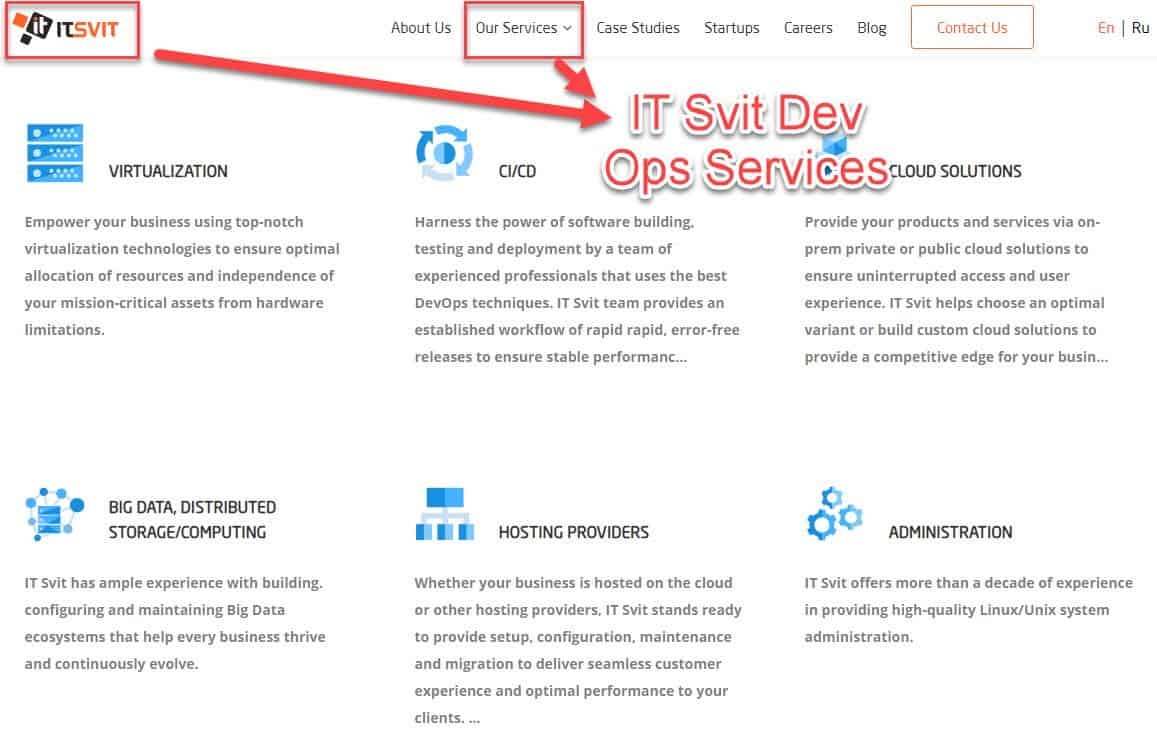
In many ways, the design and copy of the first are geared at clients, while the design and copy of the second are targeting talent.
Content Marketing: Both of the companies have public blogs (which might seem like a given, but it is not always present, such as in the case of Dressler Consulting, for example).
In the case of IT Svit, the blog is targeting clients through articles focused on achievements, industry trends, and news related to the company (these articles might as well work as a tool to attract talent interested in working for a successful business too).
In the case of Daxx, the blog is more elaborate and richer in content - they tackle articles connected to the company, industry trends, topics that might interest clients (e.g. why
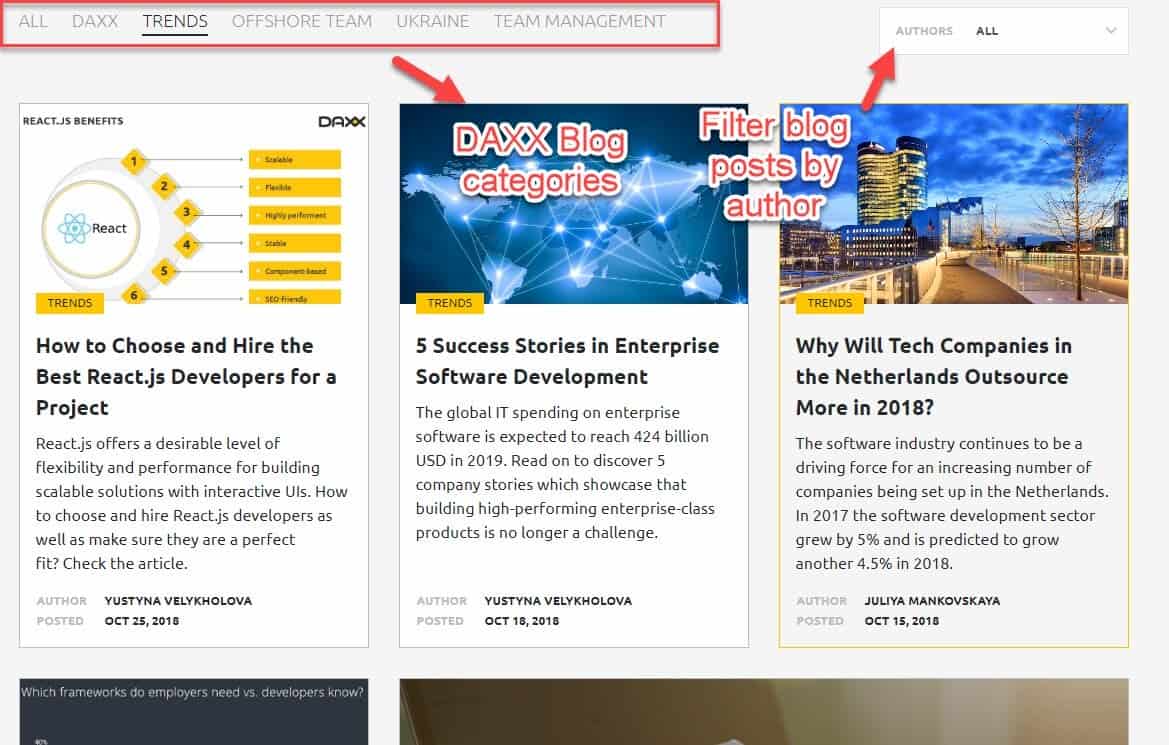
All of these pieces of content are geared at clients as much as they are geared at talent - and they aim to establish Daxx as a leader in their industry.
Neither of these two companies has visible case studies, reports, whitepapers, or eBooks offered - which means that their inbound content marketing strategy is mostly based on attracting a readership that has a certain potential to contact them directly, rather than creating actual leads by using some sort of download-for-contact details form.
Social Media: IT Svit is present on multiple social media channels, which they link at the bottom of their homepage (Facebook, LinkedIn, Twitter, Instagram, GitHub, and even a messaging channel on Telegram).
Clearly, they invest in social media. When looking closer at their pages though, it is noticeable that they focus mostly on the content they produce for their blog - this is what is shared on their Facebook page, LinkedIn, and so on.
Even more, there seems to be no differentiating factor between how these pieces of content are shared on these channels.
Daxx, on the other hand, is present on a smaller number of social media channels - mostly, the mainstream ones (Facebook, Instagram, LinkedIn, and Twitter). Their strategies differ slightly for different social media channels.
For instance, their Facebook is focused a lot on their team and attracting new talent through job posts, while their LinkedIn shows job announcements and shares blog articles created with clients and potential clients in mind.
Video Marketing: IT Svit doesn’t have a YouTube channel, but they have created videos in the past (posted directly on the social media channels). They seem to have left video marketing behind as of the beginning of 2018, though.
Daxx, on the other hand, does have a YouTube channel (linked at the bottom of the home page with the other social media channels).
They mostly post news about company activities planned for their employees, meetups, and so on - so clearly, their video marketing is centered on employer branding more than actual lead generation.
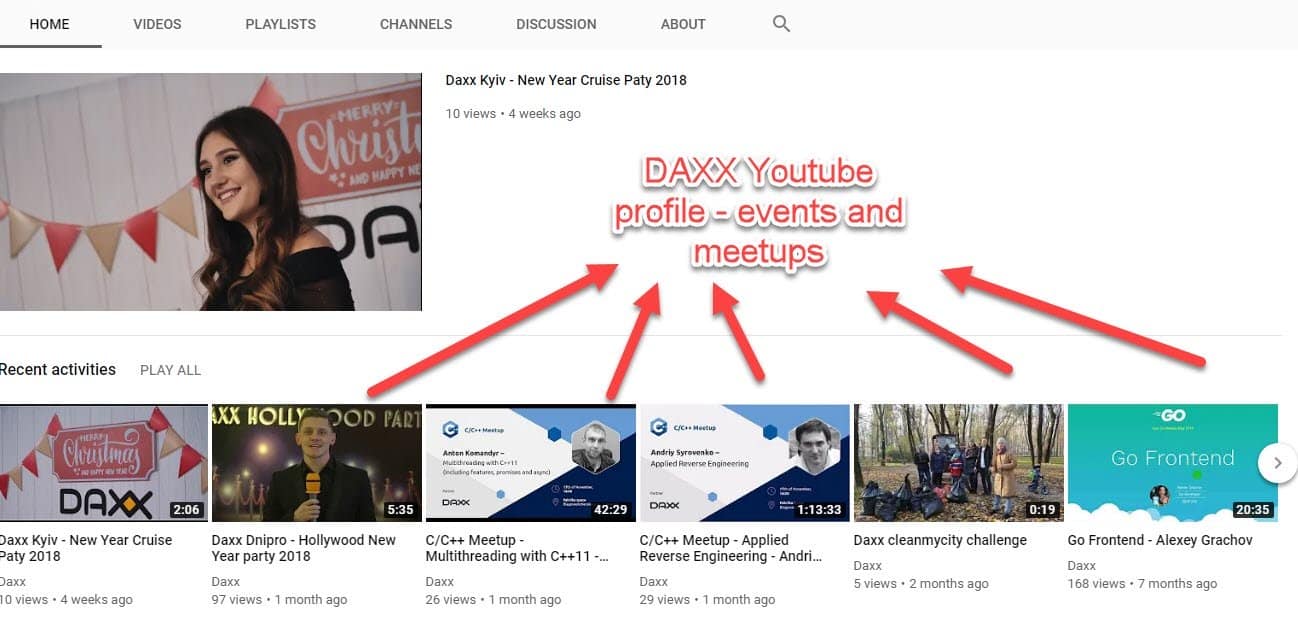
Overall, judging by the marketing strategies we spotted for these two companies, as well as other IT outsourcing businesses we’ve looked at in Ukraine, performance-based inbound marketing techniques seem rather poorly developed here. It is, however, the case with most IT outsourcing businesses in Central Eastern Europe (as we have shown it happening with most IT outsourcing companies around the world, actually).
As mentioned before, there are no less than 230,000 IT engineers in Ukraine. The country has a top-rated educational system in the scientific and mathematical fields allows not only the constant fueling of the IT market with new engineers, but also their growth - many of them do not act as pure body-shop programmers, but actually advance into leading roles.
Moreover, according to the 2018 Guide to Software Outsourcing in Eastern Europe, their hourly rates range between $25 and $35, making them price-competitive players in the entire IT outsourcing industry.
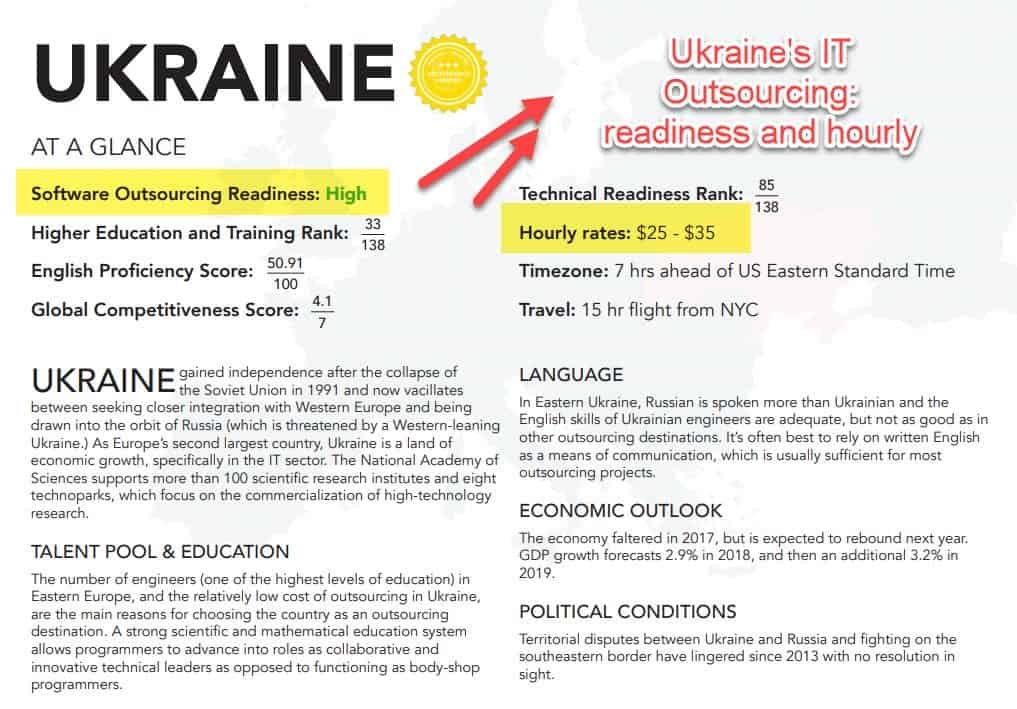
As it happens in most cases with IT outsourcing companies, much of their marketing strategy is focused on attracting talent - with Facebook pages that praise their employees’ achievements and show how they are rewarded through various types of activities.
Furthermore, a quick search for “developer” in Ukraine on LinkedIn reveals more than 2,000 jobs at the moment of writing this.
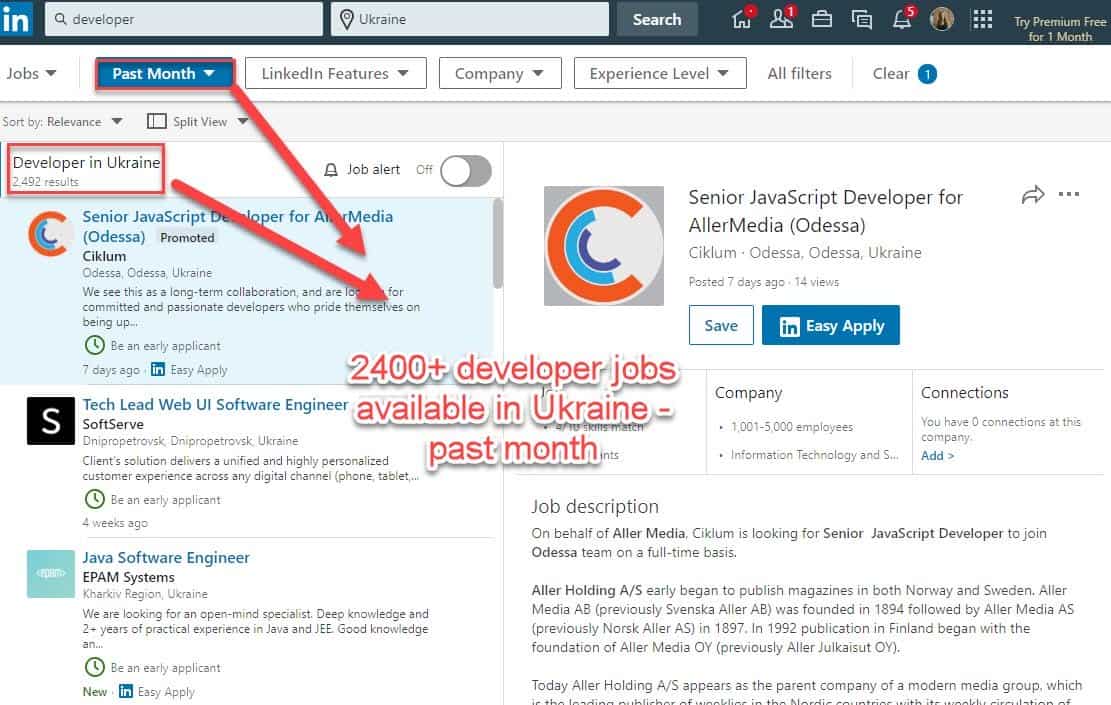
A lot of them are in Kyiv, of course, but 703 results are shown when searching for the same term in Lviv, for example - showing that the IT outsourcing industry is
On most websites we’ve looked at for top-rated Ukrainian IT outsourcing companies, there is a “Careers” section right at the top of their homepage - which shows that there is a keen interest in attracting talent and that this is a priority for these businesses.
Although a very well-regarded player on the IT outsourcing market, Ukraine does pose some challenges. There are, of course, opportunities that could be tackled in the future as well - but in many ways, the challenges they have to face stand in the way of that.
In terms of opportunities, Ukraine is a country with plenty to offer. As mentioned before, they have a very good educational system, especially in technical fields, which allows future IT engineers to move past their “programmer” status and advance into leadership roles.
At the same time, the political background of Ukraine (with territorial disputes between them and Russia) and the lack of EU integration might pose some challenges for the future of IT outsourcing companies here. Germany has opened their doors to Ukrainian workers, yes, but it remains to see how many of them will join IT companies in Germany.
It is worth noting that Ukraine’s economy took a toll in 2017, but was expected to have grown by 2.9% in 2018 and another 3.2% over the course of 2019 (according to IT Market in Eastern Europe: Full Overview of Top Software Development Destinations).
English levels are OK in Ukraine, but the main languages they speak are Ukrainian and Russian. In writing, Ukrainians do show a good enough level of English to work and provide IT services in - but communication might be, at times, an issue.
Are Ukrainian IT outsourcing companies ready to make the leap into creating and selling their own products? In many ways, yes - they have the talent, the experience, and the frameworks already set in place. It does take a leap of faith and it will take plenty of good marketing - but it can be done (which is actually true for most of the companies we’ve tackled in this entire guide).

No problem! Just enter your email address and we'll send you the PDF of this guide for free.
Conclusion
IT outsourcing is a fascinating industry to look at - and its evolution is even more interesting. Central Eastern European countries have grown a lot since the 90s - and the IT field has played a major role in all of this.
The next step would be moving the focus from IT services and centering it on unique products.

The countries we have mentioned in this guide do have all the parameters set in place for this. They just need the ideas, the courage, and the marketing to move farther.
Meanwhile, Central Eastern Europe provides excellent IT outsourcing services in a wide range of technologies - including the most recent and cutting-edge ones, like Big Data and the Internet of Things. They have a lot of talent, they speak good English, and they use project management methods that are aligned with the international landscape.
Will they make the jump?
It is left to see.

You're So Close!
Copyright ©2024 MAN Digital. All Rights Reserved.